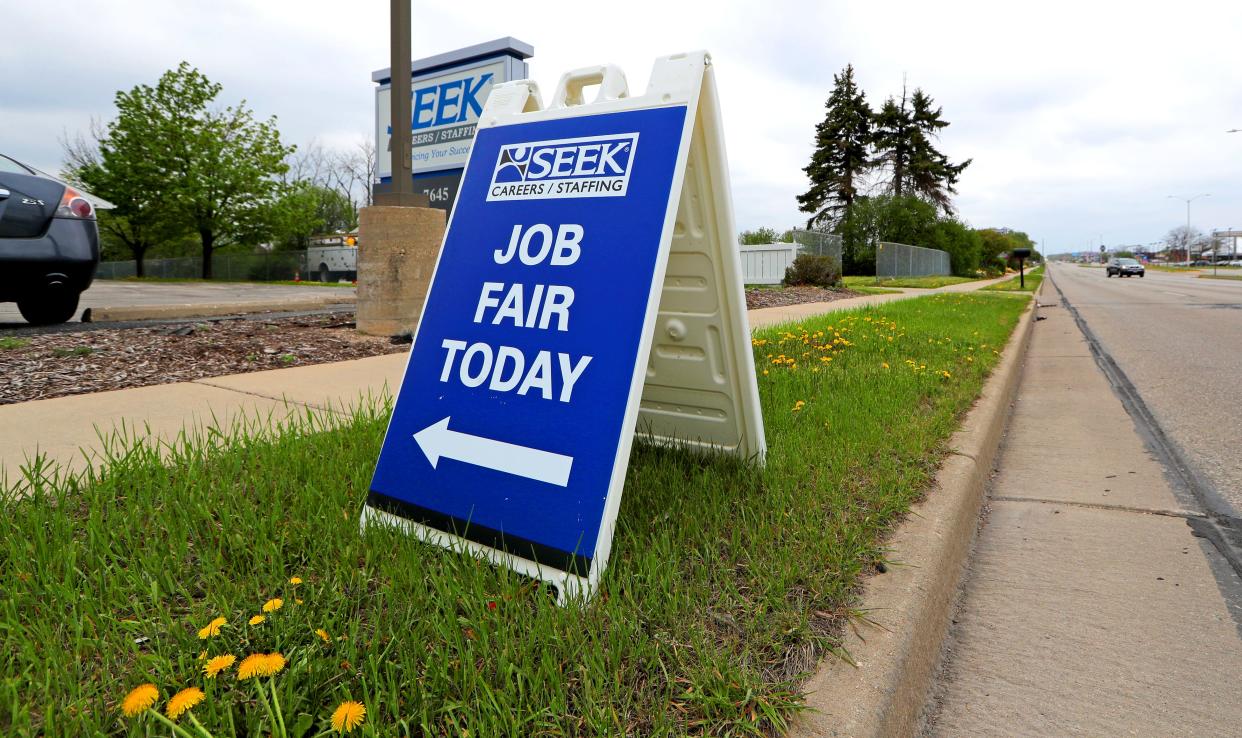Wisconsin's job recovery from pandemic has been quick but 'uneven,' according to new policy forum report

The state's economy and job numbers are almost where they were in pre-pandemic times.
Total employment is down roughly 2.4%, or 69,428 jobs, from December 2019, according to a report from the non-partisan Wisconsin Policy Forum.
The report said that the recovery has been "uneven."
Employment in clothing and clothing accessory stores decreased 20% statewide; amusements, gambling and recreation are down 15%; membership associations and organizations are down nearly 13%; accommodation is down 12%; personal and laundry services are down 11.5%; and food services and drinking places are down 9%.
"Combined these six sub sectors alone account for a decline of 38,142 Wisconsin jobs since December 2019," the report says, noting that the change is "more than half of the 69,428 total jobs lost since that time."
The food and drink sector continues to struggle, especially in Dane County, which is down 13.1%, and Milwaukee County, which is down 11.8%.
Related: Top Wisconsin businesses wrestled with worker shortage, supply chain issues during 2021
However, one sector is thriving according to the report — transportation and warehousing, which grew 6.3% during the last two years.
Between 2001 to June 2015, the state added about 5,000 warehousing and storage jobs, the forum said.
That number jumped sharply in when the Amazon fulfillment center in Kenosha opened in 2015 and Milwaukee County fulfillment center opened in 2020.
"Since June 2015, more than 16,000 (warehouse jobs) have been added," according to the report. "Of those, nearly 10,000 are in Kenosha and Milwaukee counties alone, and large increases in each of those counties occurred in the first few months following the opening of the fulfillment centers."
Couriers and messengers have grown more than 26% and have added nearly 4,000 jobs in the last two years.
The unemployment rate has hovered around 3% the last several months and the labor force participation rate is near the level it was in 2019, but businesses are still struggling to find workers for their vacant positions.
"Wisconsin's aging population, low birth rate and lackluster net migration figures have led to a reduction in the working-age population," according to the report. "The Wisconsin Department of Administration projects the state's working-age population will remain roughly the same size, if not decline slightly, until at least 2040."
Essentially, the state does not have enough workers to fill the job openings and that can hinder the growth of the economy.
"Wisconsin's residents are reaching a typical retirement age at a much faster rate than they are entering the workforce, shrinking the overall labor pool," according to the report.
One area that is of particular concern, the report pointed out, is nursing and residential care facilities.
According to the report, in December 2019, there were roughly 83,000 residents working in nursing and residential care facilities, but in November 2021, that employment level fell by more than 10,000 workers, the lowest level since March 2003.
The report concludes that the state "has reason to celebrate its relatively rapid jobs recovery following huge losses in 2020."
"However, labor shortages and continued struggles in certain key sectors now pose a sizable challenge to the state’s economy and quality of life and could require attention and action from lawmakers," the report said.
"Those steps could include bolstered and targeted education and worker training, renewed efforts to lure workers from other states and countries, and enhanced efforts to identify and reduce other barriers to employment."
Our subscribers make this reporting possible. Please consider supporting local journalism by subscribing to the Journal Sentinel at jsonline.com/deal.
DOWNLOAD THE APP: Get the latest news, sports and more
This article originally appeared on Milwaukee Journal Sentinel: Wisconsin's job recovery from pandemic has been quick but 'uneven'

